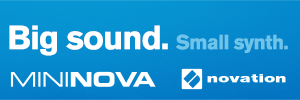 flickr set by kb_cheapmods
flickr set by kb_cheapmods"Crazy cross-board jumpers that I had to create, along with my own added P24 header (wasn't on the original board), and mine and a previous owner's hand-lettered labeling."
"A few years back I bought both of these PCBs off the same seller on ebay, who said he received them in a package deal. He didn't have a Moog Source, and said he had no use for them.
They were untested, missing parts, as-is, but those words are my middle name! ;) So I did the Buy-It-Now for both.
When I got them, they were noticeably different. One seemed to be the production model, but the other had a different layout, no underside soldermask, no component labeling in the top artwork, some kludgy connections, etc. This latter one had the mysterious designation, "X-1132."
I figured it was a prototype.
So I set about getting them both to work: I downloaded the schematics from the web, identified the missing components and ordered them from various sources, then rebuilt them until they made sound.
For the X-1132, this was much harder than for the production version: I had to create and install some of the missing headers, decipher what connections were missing by following traces or checking pin connections, replace a few broken sockets.
They both work pretty well now. They're both fully recapped, with polystyrene caps for the oscillator timing, LM3045J (mil-std ceramic package) for the transistor ICs, in the hopes that they will be reasonably stable without microprocessor tuning control. I'm thinking of building a 4-osc, 2-vcf, fully-knobbed tabletop synth with them. The great thing about the Source design is that every CV is 10V, so if I want to, I could make it highly modularized.
This set is just a photographic documentation of these two boards"
inside a Moog Source









































































